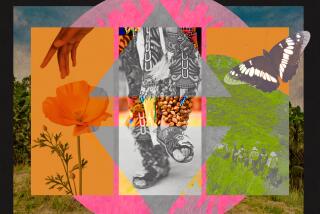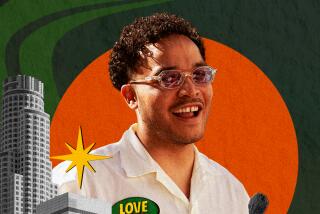Descendants of Settlers Help L.A. Celebrate 209th Birthday
- Share via
It is a mark of some distinction, in this rootless city of 3.4 million, to be able to claim that one is a Los Angeles native. But for 200 families who trace their ancestry to Mexican expeditioners who founded the first pueblo at Los Angeles 209 years ago, it is a source of deep pride that uplifts many Latinos, even more recent arrivals.
That sense of historical achievement was celebrated Monday by Mayor Tom Bradley, Los Angeles Schools Supt. William Anton, Archbishop Roger Mahony and more than 100 pobladores (settlers), the direct descendants of the city’s original settlers, whose numbers are estimated at more than 1,000 in Southern California.
For the record:
12:00 a.m. Sept. 7, 1990 For the Record
Los Angeles Times Friday September 7, 1990 Home Edition Metro Part B Page 3 Column 1 Metro Desk 1 inches; 30 words Type of Material: Correction
City celebration--An article in Tuesday’s editions stated that Mayor Tom Bradley on Monday celebrated the city’s founding 209 years ago by settlers from Mexico. Bradley did not attend the official celebration.
At El Pueblo Historic Park downtown, costumed celebrants were among nearly 300 people observing the founding of Los Angeles by 44 civilians and four soldiers on Sept. 4, 1781. Mahony spoke of the many achievements by thousands of other Mexican immigrants to the city since that day.
Nor did civic leaders forget the earliest residents of the region that is now Los Angeles--the Gabrielino Indians. Tribal members conducted a prayer and ritual burning of sage in honor of their 3,000-year history in Southern California.
Art Romero, 55, a descendant of Luis Quintero, an original settler of the Spanish pueblo, said his grandchildren are 10th generation Californians--”a fact that just blows people’s minds.”
“Most people who say they’re natives had families come here from the Midwest, and they were born here,” Romero said. “But we have generation and generation and generation before us. It gives you a sense of responsibility and great satisfaction.”
The pueblo’s settlers were members of the Anza expedition, which made a tortuous trek to California from the Sonora and Sinoloa regions of Mexico. The hearty pioneers and their small accompaniment of soldiers were chartered by the Spanish throne with founding agricultural settlements to supply food to Spain’s forts at Santa Barbara and San Diego.
In the summer of 1781, the expedition fanned out from the Mission San Gabriel, nine miles east of what is now downtown Los Angeles. Small groups of men, women and children founded many settlements, naming each new one for a church feast day.
When one 48-member group discovered a restful spot on a large river, perfect for creating homesteads and tilling the soil, they named it El Pueblo de la Reina de los Angeles. Their nine-mile walk from San Gabriel to Los Angeles was re-enacted at dawn Monday by dozens of pobladores families.
The Los Angeles of today would seem fantastic to the first pobladores . The site of the original pueblo is not far from the busy Hollywood Freeway, and nearby Chinatown and the downtown business core are bustling with commercial redevelopment.
For Carmelita Mata, 75, a descendant of the Palomares family of settlers, it is as important to look into the city’s past as it is to look to its future.
“We feel a lot of historical pride in knowing we are the descendants,” said Mata, looking out over a large group including dozens of descendants of the first settlers, all of whom are distantly related to Mata.
“In one way or another, we are all related, and that’s really great,” she said. “We are all cousins here.”
More to Read
Sign up for Essential California
The most important California stories and recommendations in your inbox every morning.
You may occasionally receive promotional content from the Los Angeles Times.










